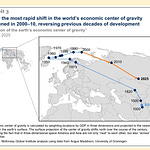A version of this essay was published by firstpost.com at https://www.firstpost.com/india/a-tale-of-two-supreme-courts-best-practices-from-the-us-and-india-need-to-be-adopted-10875201.html
I must confess a little shamefacedly that I watched the godawful fuss in the US following the SCOTUS’ overturning of Roe v Wade with some smugness. That was because, at long last, the Supreme Court of India finally threw the book at Teesta Setalvad, R B Shreekumar, Sanjiv Bhatt et al, in what had long been a travesty of justice. I began to think that maybe the Indian system, although glacially slow, has a thing or two to teach the much-ballyhooed Americans.
Sadly, my joy was short-lived. Within a week, there was the spectacle of a two SC judge-bench in India harshly criticizing Nupur Sharma. They denied her plea to bundle various FIRs filed in far-off places like Calcutta, expressed personal opinions not germane to the plea, and lectured her on how a blasphemy allegation against her was her fault. They had apparently made up their minds without considering any evidence.
I am properly chastened, and I am eating crow. Hubris before nemesis. I should have known. India’s institutions are severely compromised. Even the CJI implied in a speech in the US that India’s institutions are less developed because India is not a “mature democracy”.
Earlier, I used to stand in awe of the Indian judiciary. My great-uncle was a Chief Justice, and a family friend was on the Supreme Court. Two friends are or were High Court justices. I have always had a good impression of them. But over time, I began to see problems in the Indian system, and I wrote in 2018 about urgently needed judicial reform in Can We Fix the Deeply Troubled Judiciary?. The PIL (Public Interest Litigation) system has been weaponized, for one thing. The backlog of cases is daunting, for another.
Several years later, the same problems have gotten worse, including structural issues about the Supreme Court straying far beyond its remit of interpreting the Constitution. But in India, a judge recently condemned ‘social media’ for alleging that he had violated both decorum and propriety in what an impartial observer might consider extraneous comments.
In the US, those who were upset with the SCOTUS’ action roundly abused it; for instance an Indian-origin politician named Congresswoman Pramila Jayapal. I don’t know about the merit of her argument (and based on her ultra-woke-ness, it may have none), but it is very interesting that she could say rude things like this about the court and judges. In India, draconian ‘contempt of court’ provisions would be applied, and the critic jailed, for even mild criticism..
That is one of the differences between the US judiciary and the Indian. There are several others. To begin with they are a) selection, b) tenure, c) ambit/remit and jurisdiction, d) appraisal and termination.
Selection and Accountability
In the US, quite a few judges are elected: I have seen their names on election billboards, and so far as I can tell this is for state judge positions. That sounds odd to Indians partly because the US is a federation of states, whereas India is a union, and that makes a difference. Anyway, I am under the impression that most judges in say, the California state judiciary, are directly elected by the public.
On the other hand, federal judges are appointed by the government, but they also have to go through a confirmation process wherein they are basically grilled by the Senate, i.e. the equivalent of the Rajya Sabha. Thus, elected officials representing individual voters do ‘elect’ the judges. This brings in a level of accountability.
There is the obvious flaw that a determined government can “pack” the courts with people they like, especially if they have an ideological ax to grind. This only works, of course, if the Executive Branch can convince a majority in the Senate, i.e. the Legislative Branch. In fact, it is alleged, and it is likely, that ex-POTUS Trump packed the courts with people he liked.
Even then, it is hard to make the case that the US Supreme Court is representative of public opinion. Look at how the old school tie works, and how a discreet endorsement here and there might have worked.
In India, it is much worse. Judges themselves select new judges, and will not tolerate the Executive branch or Legislative branch getting involved in this. So far as I know, this is unique in the whole world. When the Indian Government suggested a National Judicial Appointments Committee (NJAC) that would have input from the other branches, the judicial branch shot it down claiming it was unconstitutional.
I wonder if a National Judicial Service is a good idea, because the obvious rot in the Indian administrative services gives one pause.
Common sense suggests a selection mechanism where there is a level of outside input. Without that, there is every incentive to promote friends and relatives of current judges. In fact, it turns out that many current Supreme Court judges are indeed related to former judges or politicians. It would be better to adopt the US system of confirmations by the legislature following a nomination by the government, of course with advice from the judiciary.
Tenure
Once selected, a US Supreme Court judge is in place for life, until he/she retires voluntarily, or dies, or is impeached. This means judicial appointments can have a very long impact, because a judge may be on the SCOTUS for fifty years. But judges have also been known to change in office, for instance moderating extreme views they might have entered with.
In India, Supreme Court judges retire at 65, state High Court judges retire at 62.
On the face of it, this seems like a more sensible system, because the judges are still relatively young and vigorous while on the court. However, there is a pernicious loophole: retiring judges are then absorbed into other positions, which means there is an incentive for them to write judgments that make them attractive to possible future employers.
Judges get such substantial pensions and other privileges that it would not be a hardship to place a moratorium on them accepting post-retirement employment. In the US case, it is unlikely that a SCOTUS judge would take up post-retirement employment, even though I wonder if they are explicitly forbidden from doing so. (Even post-retirement POTUSes don’t take up new jobs. They just sort of fade away).
A via media on tenure may be a better idea: raise Indian judges’ retirement age to, say 70, considering that people are healthier and live longer these days, and that they have valuable expertise, but strictly forbid any post-retirement employment of any kind, including commissions, arbitration, etc.
Ambit/remit and jurisdiction
In my earlier essay, I pointed out the need to bifurcate the top court and to clearly specify its scope. Here the US structure is clearly superior, and could be adopted more or less in toto.
For, in the US, the Supreme Court hears Constitutional cases, and only Constitutional cases. All other cases go elsewhere: Federal Circuit Courts that are courts of appeal, and Federal District Courts that are trial courts.
I think this fine distinction can be ignored, and India should institute four regional Courts of Appeal that will hear cases that exceed the state High Courts’ jurisdiction, for instance inter-state disputes.
One of the issues today is that the SC seems whimsical in what cases it decides to hear, and what it drops. For instance, it declined to hear a case brought by Kashmiri Hindus about their genocide saying the matter was too old, but paradoxically it agreed to hear a case about the Mahatma Gandhi assassination, even though that was much older. And it likes to take up cases on cricket!
Besides, certain influential lawyers (and certain NGOs) can get the SC to hear their clients at midnight, while others languish for decades.
There must be clear guidelines provided by Parliament perhaps through a Constitutional Amendment. This should also put paid to such quaint notions as “constitutional morality” (Constitutions are not moral documents) or “original intent”, the US version of “basic structure” (who knows what was going on in the minds of the Constituent Assembly; only what they wrote down can be discussed).
In addition, the PIL mechanism should be dropped, and all cases required to be filed at the District or Magistrate court, and they should bubble up through the system in case they have merit. It is deeply offensive to watch those with deep pockets, especially malign foreign-funded NGOs, getting their way with little effort by just waltzing directly into the SC.
Appraisal and termination
Judges are extremely important members of society, and the Supreme Court in particular is the last refuge for a common man. There should be mechanisms to ensure that the judiciary does not go off on tangents, but that they are working towards the common good of the nation.
An ancient judge was executed and flayed alive. His skin was used to upholster a judge’s chair. What is more, his successor, his son, was forced to sit in that chair, on his dead father’s skin, to deliver his judgments. That is barbaric, but it does make a point. Judges must be immaculately neutral and scrupulous.
So what is the metric for appraisal? In India, one should be the quick disposal of cases. Pendency is a huge problem, and a good bit of it is because of too few working days: too many holidays, and a two-month vacation in summer and a two week vacation in winter. These days there is no reason not to run the courts in multiple shifts, including a night shift. And most work should be done online, so that litigants needn’t waste time waiting around courthouses all day.
There should be clear Key Result Areas, and judges need to be measured on meeting them. These metrics can be determined by Parliament through a Constitutional Amendment. Justice delayed is justice denied, after all.
What if a judge fails in these metrics, or in other ways? There was a High Court judge, with the memorable name of Karnan, who was sent to six months’ imprisonment for contempt of Supreme Court. The rules for impeachment should be made more transparent. At the moment, it looks like judges can close ranks and prevent impeachment, or at least make it very difficult in India, and possibly even in the US.
There has been only one successful impeachment of a SCOTUS judge so far as I can tell: one Justice Samuel Chase in 1805. But the US senate acquitted him, so he returned to service. I am not aware of a single Indian judge who has been impeached, but surely some deserve to be.
While India’s democracy “matures”, there is nothing wrong in taking some lessons from the US about what works. There is no need to import everything wholesale, but pick and choose judiciously.
As has been discussed by many, it would be a good idea to also emulate the structure of the US Constitution, a brief document of 10 or so pages. A new Constitution is needed in India, as the prolix version we have now is failing to stand the test of time, as the many Amendments indicate. All the more reason why we need a better-designed Supreme Court to interpret it, and it alone.
1900 words, 5 Jul 2022

















